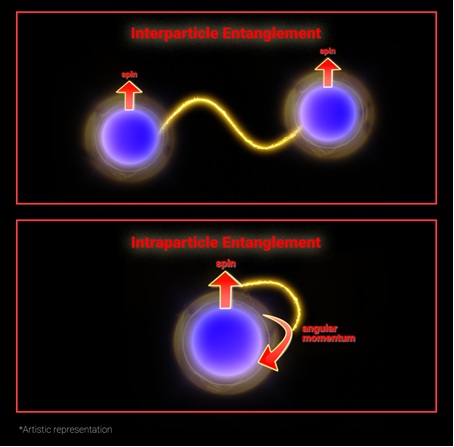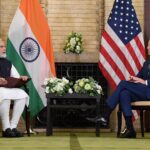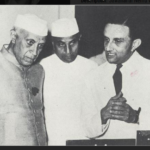For decades, quantum noise has been the bane of quantum physicists, a chaotic force that disrupts the delicate order of quantum systems and erases the fleeting connections of entanglement.
But a groundbreaking discovery by Indian scientists is poised to rewrite this narrative, revealing that noise, under specific conditions, can surprisingly be a friend, not a foe, to quantum entanglement. This paradigm shift holds immense promise for the development of more robust and practical quantum technologies, from unhackable communication to powerful new computers.
At the heart of this revelation lies intraparticle entanglement, a phenomenon where different properties within a single quantum particle become inextricably linked. This is distinct from the more commonly studied interparticle entanglement, which involves connections between two or more separate particles. While interparticle entanglement is highly susceptible to environmental interference – leading to “decoherence” or the loss of quantum correlations – the new research from the Raman Research Institute (RRI), in collaboration with the Indian Institute of Science, IISER-Kolkata, and the University of Calgary, demonstrates a remarkable resilience in its intraparticle counterpart.
The Surprising Power of Noise
The study, published in Frontiers in Quantum Science and Technology, focused on how different types of quantum noise affect these entangled systems. The most striking finding emerged when investigating amplitude damping, a form of noise that simulates energy loss in a quantum system. The scientists discovered that not only did intraparticle entanglement decay more slowly under this noise, but it could also be revived after a period of degradation and even generated from an initially unentangled state. In essence, under the right conditions, noise isn’t just a destroyer of quantum information; it can be a creator.

This counterintuitive effect is precisely quantified by a new mathematical formula derived by the researchers. As Animesh Sinha Roy, the paper’s lead author and a post-Doc fellow at RRI, explained, this formula provides an “elegant geometric representation” of how entanglement behaves under amplitude damping, allowing for precise predictions based on the input state and noise strength.
Significance of the Discovery: Building Robust Quantum Systems
The implications of this discovery are profound for the burgeoning field of quantum technology. Current quantum computers and communication networks face significant hurdles due to the extreme fragility of entangled states. Any interaction with the environment, whether from thermal fluctuations or stray electromagnetic fields, can cause decoherence, leading to errors and limiting the operational lifetime of quantum systems.
The RRI team’s work suggests that intraparticle entanglement could offer a powerful solution to this challenge:
- Enhanced Robustness: The inherent resilience of intraparticle entanglement to various forms of noise makes it a more stable platform for encoding and processing quantum information. This could lead to quantum devices that are less prone to errors and can operate for longer durations without requiring complex and costly error correction mechanisms.
- Noise as a Resource: The ability to generate and revive entanglement from noise itself opens up entirely new avenues for designing quantum systems. Instead of constantly battling environmental interference, future quantum engineers might learn to harness certain types of noise as a resource, actively using it to maintain or even enhance entanglement. This could dramatically simplify the design and operation of quantum hardware.
- Broader Applicability: Since the results are not dependent on a specific physical setup, the findings are broadly applicable across various quantum platforms, including those using photons, neutrons, and trapped ions. This universality increases the potential for widespread adoption of intraparticle entanglement in diverse quantum technologies.
Future Applications: Quantum Communication and Computing
The immediate practical applications envisioned by the researchers are particularly exciting for quantum communication and computing:
Quantum Communication: Intraparticle entanglement could lead to more secure and stable quantum communication networks. Professor Urbasi Sinha, head of the QuIC lab at RRI, noted that the team is already working on experiments using single photons and intraparticle entanglement for quantum communication applications, such as developing quantum key distribution (QKD) protocols that are more resistant to real-world environmental noise. This is a key objective of India’s National Quantum Mission (NQM), which aims to establish satellite-enabled quantum-secured communication over long distances.
Quantum Computing: In quantum computing, the ability to maintain entanglement in the presence of noise is paramount for building fault-tolerant quantum computers. Intraparticle entanglement’s robustness could lead to more stable qubits, the fundamental building blocks of quantum computers, thereby accelerating the development of machines capable of solving complex problems beyond the reach of classical supercomputers. The NQM, with its ambitious targets for developing intermediate-scale quantum computers, would directly benefit from such advancements.
This research, supported in part by the India-Trento Programme on Advanced Research (ITPAR) and the National Quantum Mission, underscores India’s growing prominence in the global quantum race. By challenging fundamental assumptions and revealing the surprising duality of quantum noise, these scientists have not only deepened our understanding of the quantum world but also charted a promising new course for the development of practical, real-world quantum technologies. The quantum realm, it seems, continues to be full of hidden surprises, with its secrets waiting to be transformed into revolutionary tools.


![quantum-pib-2[1].jpg](https://southasianherald.com/wp-content/uploads/2025/07/quantum-pib-21.jpg.jpeg)



